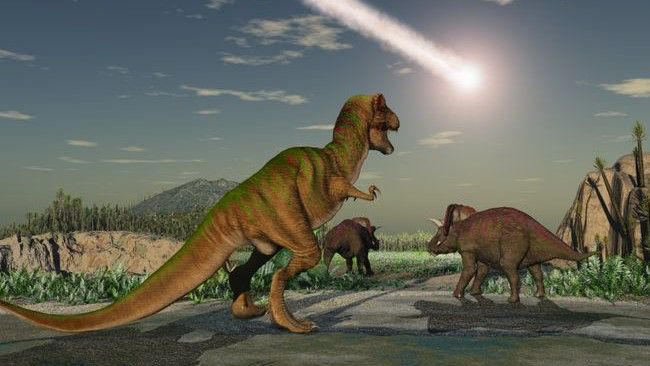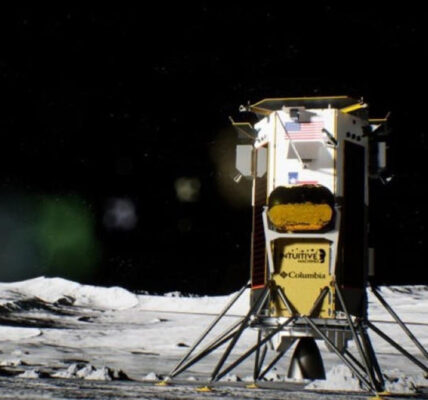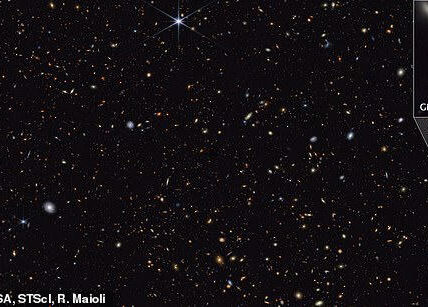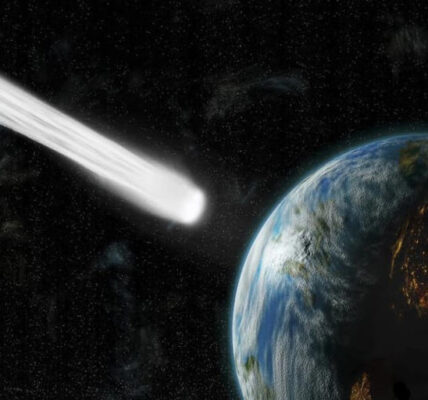Ganymede Asteroid Impact – A massive asteroid struck Jupiter’s largest moon, Ganymede, four billion years ago, shifting its axis entirely. Discover how this colossal event reshaped the moon and what future missions might reveal.

Ganymede Asteroid Impact: A Cataclysmic Event in the Solar System’s History
When we think of devastating asteroid impacts, the event that led to the extinction of the dinosaurs 66 million years ago often comes to mind. However, that catastrophic impact pales in comparison to the Ganymede asteroid impact, an ancient event that rocked the Solar System four billion years ago. Recent research from Kobe University has uncovered evidence of a colossal asteroid that struck Ganymede, Jupiter’s largest moon, with such force that it shifted the moon’s axis entirely.
Ganymede: The Solar System’s Largest Moon
Ganymede is the biggest moon in the Solar System, boasting a radius of 1,635 miles. Similar to Earth’s moon, Ganymede is tidally locked, meaning it always presents the same face to Jupiter. Despite its size and proximity to Jupiter, Ganymede remains largely unexplored, with much of its history still shrouded in mystery. This lack of exploration has made the discovery of the Ganymede asteroid impact even more significant, as it offers new insights into the moon’s early history and evolution.
Uncovering the Ganymede Asteroid Impact
The story of the Ganymede asteroid impact began in the 1980s when researchers first noticed large furrows on Ganymede’s surface. These furrows, which form concentric circles around a specific point, hinted at a significant impact event in the moon’s distant past. However, the exact size of the impact and its consequences on Ganymede were not fully understood until recent studies shed new light on the event.
According to the latest research, the asteroid that caused the Ganymede asteroid impact was approximately 186 miles in diameter. This makes it 20 times larger than the asteroid that led to the extinction of the dinosaurs. The impact created an enormous crater on Ganymede, measuring between 870 and 994 miles in diameter. The sheer scale of this impact was so vast that it caused Ganymede’s axis to shift entirely, a phenomenon that has only been observed in a few other celestial bodies.
The Significance of Ganymede’s Axis Shift
One of the most remarkable findings from the Ganymede asteroid impact is the fact that the collision was powerful enough to reorient the moon’s axis. The furrows on Ganymede’s surface, which are located on the meridian farthest from Jupiter, indicate that the moon’s orientation was drastically altered by the impact. This shift in axis is similar to what scientists have observed on Pluto, which also underwent a significant reorientation due to an ancient impact.
The axis shift resulting from the Ganymede asteroid impact likely had profound implications for the moon’s evolution. However, many questions remain about the specific effects of this event on Ganymede’s internal structure and thermal evolution. Researchers believe that the impact may have played a crucial role in shaping the moon’s geological features, but further studies are needed to fully understand the long-term consequences.
Ganymede Asteroid Impact and Future Exploration
Despite the importance of the Ganymede asteroid impact, Ganymede itself remains largely unexplored. Data from the moon is scarce, which has made it challenging for scientists to piece together its history. To gain a better understanding of Ganymede and the impact event that reshaped it, researchers have turned to other celestial bodies for clues.
One such comparison has been made with Pluto, where previous studies using data from NASA’s New Horizons space probe confirmed that the dwarf planet experienced a similar impact event. This event caused Pluto’s rotational axis to shift, much like the Ganymede asteroid impact did to Ganymede. By studying these parallels, scientists hope to gain insights into the mechanisms behind these massive impacts and their effects on celestial bodies.
Looking ahead, the European Space Agency’s JUICE (Jupiter Icy Moons Explorer) mission, scheduled to visit Ganymede in 2034, holds great promise for uncovering more details about the Ganymede asteroid impact. The JUICE mission is expected to provide unprecedented data on Ganymede’s surface, internal structure, and magnetic field, offering new opportunities to study the aftermath of the ancient impact event.
The Broader Impact of Ganymede’s Ancient Collision
The Ganymede asteroid impact is not just a significant event in the history of one moon; it also offers valuable insights into the broader processes that have shaped the Solar System. Understanding how such massive impacts can shift the axis of a moon or planet helps scientists piece together the dynamic history of our cosmic neighborhood.
Moreover, studying the Ganymede asteroid impact contributes to our knowledge of how celestial bodies evolve over billions of years. The impact likely had a major influence on Ganymede’s geological features, potentially affecting everything from the moon’s surface composition to its internal dynamics. These findings are crucial for building a comprehensive understanding of the history and evolution of not only Ganymede but other moons and planets as well.
Conclusion: The Lasting Legacy of the Ganymede Asteroid Impact
The discovery of the Ganymede asteroid impact marks a significant milestone in our understanding of the Solar System’s history. This colossal event, which occurred four billion years ago, not only reshaped Ganymede but also provides key insights into the processes that have influenced the evolution of moons and planets across the Solar System.
As scientists continue to explore Ganymede and other celestial bodies, the Ganymede asteroid impact serves as a reminder of the powerful forces that have shaped our cosmic environment. With future missions like JUICE set to reveal even more about Ganymede, the story of this ancient impact is far from over. The ongoing research will likely lead to new discoveries that will deepen our understanding of the Solar System’s past and its continuing evolution.
Related:
“NGC 6744 Galaxy Image: 5 Stunning Revelations”



